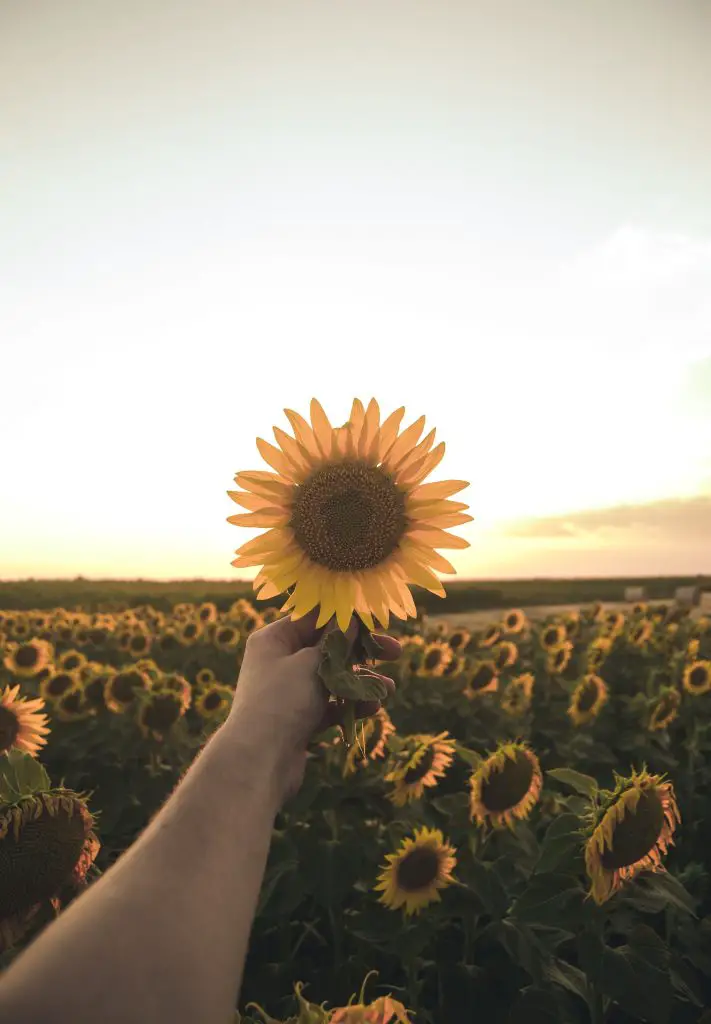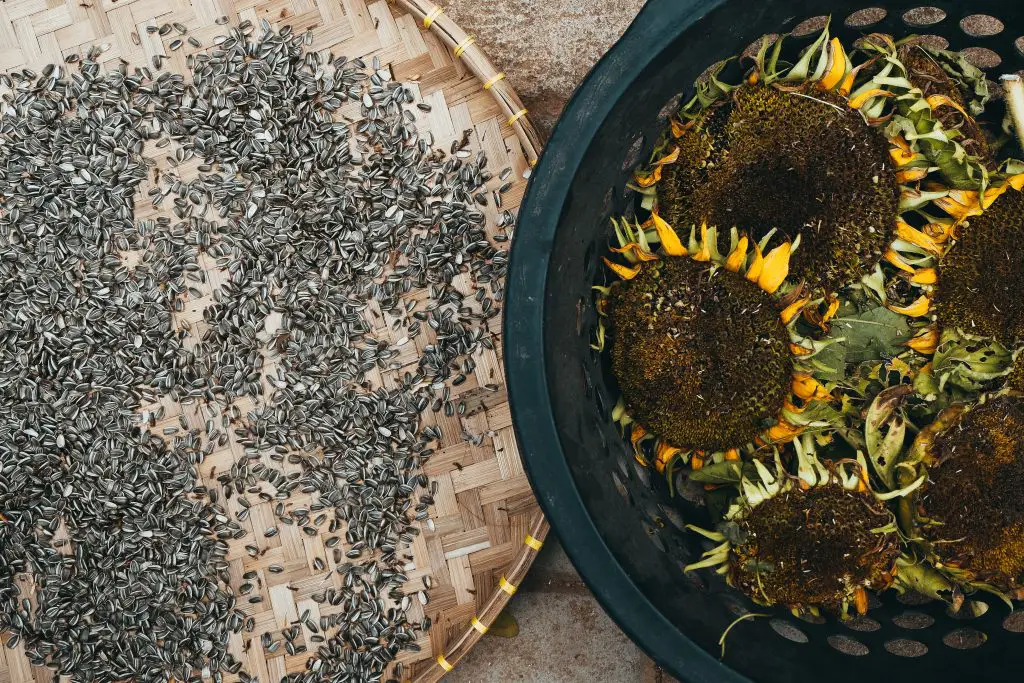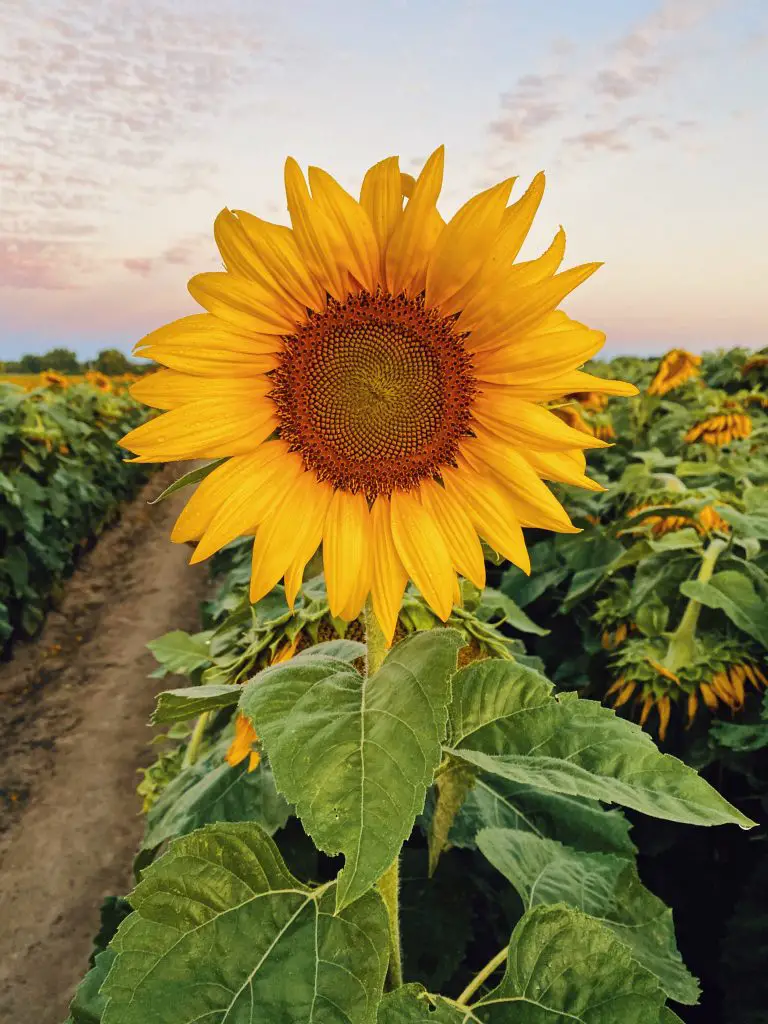Sunflowers are an annual plant that has some varieties the grow up to 6 feet tall and have large colourful flowers. If you’re looking for an outdoor plant with a cheerful personality, look no further than the sunflower. However, if you plant the seeds you may be wondering do they spread and are they invasive.
Sunflowers are plants that produce seeds which can result in self seeding in the same area that they were once planted, however, they are generally not considered to be invasive because the seeds do not tend to fly very far in the wind because they are relatively heavy seeds. The main way that they spread is through the droppings of birds and animals that consumer seeds, however, this generally does not result in your garden being invaded by sunflowers so they are generally not considered to be a problem.
However, the number of seeds that is produced in a single sunflower head is extremely large so is it easy to collect the seeds or even use them as a food source for things like chickens who absolutely love sunflower heads. Due to this large number of seeds it is advisable to remove the seed head and not allow the head to disintegrate completely if you are concerned about the sunflower self-seeding around garden.

Where To Grow Sunflowers?
These sunny plants thrive in well-drained soil and full sunlight. They grow best in warm weather climates, but will do fine in zones 4–9 as long as they get at least six hours of sun per day. They are a popular landscaping choice because of their cheerful nature, hardiness, ease of care, and reliable flowering season year after year.
However, is important to note that be best known sunflowers produce massive heads that are relatively tall, but, there are also varieties that can produce much smaller plants. There are varieties that are only a foot tall and have flower heads that are a couple of inches wide. So if you only have a little bit of space and you’re worried about shading other plants out the sunflowers you can avoid this problem by simply selecting a suitable variety for the space that you have.
The spacing that you choose for your sunflowers will vary from a few inches to a couple of feet apart depending upon the size of the variety that your growing. To see a very helpful guide of all the different varieties are available try visiting gardenia.net as they have an excellent selection guide which includes information about the height and also information about the best climate in which to grow the plants.

How To Grow Sunflowers?
If you’re growing sunflowers, while it is possible to sow the seeds directly into the garden, it is best to start the seeds off in a seed tray in early spring because the weather is still relatively cool in most regions.
Start the seeds off start by filling a seed tray with good quality seed raising mix and then firm the soil mixture into the individual cells within the seed trat form solid plugs.This is recommended because it makes it easier to transplant the seedlings into the garden later on minimizing root disturbance.
Once the soil is in seeds can be planted into the individual cells at a depth of approximately half an inch. It is recommended that you plant only a single seed per cell because the seeds are relatively large, however, some gardeners do plant to seeds two per cell and then thin out the weaker seedling if both seeds germinate.
The seed tray should then be placed in a warm sunny location and watered regularly to ensure that the soil remains moist. Sunflower seeds will typically take approximately 7 to 10 days to appear depending upon the temperature of the surrounding environment. Sunflower plants will need to spend approximately 6 weeks in the seed tray before their large enough to be planted out into the garden.

Transplanting Sunflowers Into The Garden?
Sunflower seedlings can only be planted out into the garden once the last frost of the season has passed because they are frost sensitive plants. When planting them out in the garden they ideally need to be planted in a sunny location that has rich, moist, and free-draining soil with plenty of nutrients because the plants grow very rapidly.
If the soil in your garden is not particularly nutritious you may consider additional bag of compost to increase the nutrient levels as this will also help with retaining moisture in the soil. Once the seedlings are in position the next step is to apply layer of mulch around the seedlings that is typically 2 to 4 inches thick as this will also help to retain the moisture for an extended period of time.
It is also advisable to sprinkle some snail bait around the base of the plants as they can be susceptible to attack from slugs and snails.

Once the flowers have become established is important to ensure that you water them regularly and also consider staking the varieties up. However, the need to do this will depend significantly upon the type of sunflower seeds you’re growing and also the particular location.
Obviously locations that have windy conditions are more likely to need additional support to ensure that the sunflowers remain upright in your garden. If you follow these steps you should end up with a beautiful display of sunflowers in mid-summer that is striking
The blooming period for these flowers will last approximately 8 to 12 weeks before the flowers begin to fade which makes that a very worthwhile plant to grow in your garden.
Do Sunflowers Need To Be Deadheaded?
It’s not necessary to cut the flowers off of a sunflower when they die, they can be left on the plant to continue to ripen. I personally some collect seeds from the sun flower heads and feed the remainder of the heads to my chickens as a snack as mentioned above in the article. As winter arrives you will need to remove the sunflower stalks from your garden and place them on the compost.
Conclusion
The sunflower is a hardy flower that can be grown in many different climates. It can be planted with out fear of it causing problems and becoming invasive. The plants need moderate amounts of water and are very resilient to pests and diseases. If you decide to grow sunflowers in your garden you will not regret that decision as they can bring beauty and life to your yard.
I hope you found this article useful and have great success growing sunflowers in your garden at home, if you have any additional comments or questions please leave them in the section below.
Relevant Articles
What’s The Difference Between A Daisy And A Sunflower?
Is Calendula The Same As A Dandelion?
What’s The Difference Between Gladiolus And Hollyhocks?
Can You Eat Rhubarb After It Flowers?
